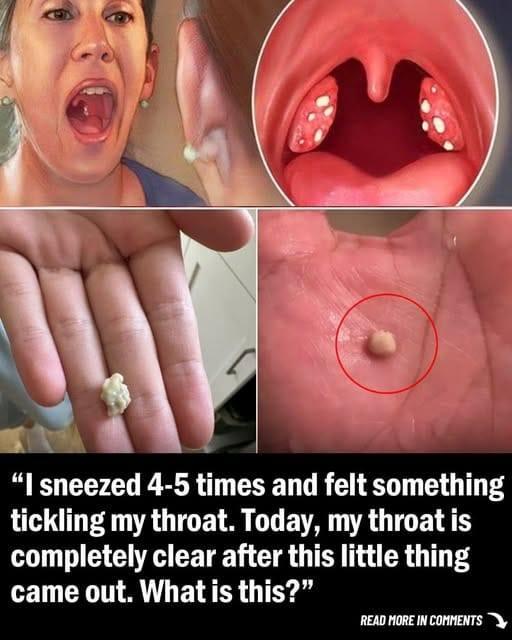Tonsil stones, also known as tonsilloliths, are something most people don’t think about until they experience them firsthand or stumble across a viral video online. While not a major health concern, they can be quite uncomfortable and even embarrassing, especially when they cause chronic bad breath or irritation in the throat. In the age of social media, we’ve all seen our fair share of odd medical videos—everything from pimple popping to cyst draining and earwax extractions.

These types of clips draw a surprising amount of attention because they reveal some of the stranger sides of our bodies, and tonsil stone removal videos have become part of that mix. If you’re like many others, you might have never heard of tonsil stones until recently, and seeing them up close can be both fascinating and a bit gross. When I came across a video of someone extracting them, I couldn’t look away, and that curiosity pushed me to find out what exactly they are, why they form, and how to deal with them. Tonsil stones are small, solid formations that develop in the crevices of your tonsils, which are the soft tissue structures located at the back of your throat that help fight infections.
These stones typically appear white or yellow and are formed from a buildup of debris like dead cells, food particles, bacteria, and mucus. This material collects in small pockets on the tonsils called tonsillar crypts, and over time, it hardens into a calcified lump. Though they may sound alarming, tonsil stones are usually harmless. However, they can cause a variety of unpleasant symptoms. For many people, the most noticeable issue is persistent bad breath, which happens because the stones can harbor bacteria that produce a foul odor. Others might experience a sore throat, difficulty swallowing, coughing, or even ear pain due to shared nerve pathways in the throat and ears. In some cases, people don’t even realize they have them because they’re so small they don’t cause any noticeable discomfort.
Tonsil stones can sometimes be visible at the back of the throat, especially if they’re large enough. If you happen to spot one or feel something odd in your throat, you might be tempted to remove it yourself. In many instances, it’s possible to gently dislodge a stone using a cotton swab, your finger, or by gargling with salt water. Water flossers and oral irrigators are also popular tools for flushing them out without applying direct pressure. That said, it’s important to be cautious—scraping too hard or poking your tonsils can lead to irritation or bleeding.
If tonsil stones are recurring or particularly bothersome, a visit to a healthcare professional is a good idea. Doctors can suggest treatments like laser cryptolysis, a procedure that smooths out the tonsillar surfaces to prevent future buildup. In more severe or chronic cases, a tonsillectomy, which is the surgical removal of the tonsils, might be recommended—though this is usually considered a last resort. Preventing tonsil stones in the first place involves maintaining good oral hygiene. This means brushing your teeth and tongue at least twice a day, flossing daily, and using an antibacterial mouthwash to minimize bacteria in the mouth. Drinking plenty of water helps too, since staying hydrated keeps your mouth moist and reduces the chance of debris getting stuck in your tonsils. If you deal with post-nasal drip or allergies, treating those conditions may also lower your chances of developing tonsil stones. Overall, tonsil stones are a strange but manageable part of human health. They might be unpleasant, but they’re rarely dangerous, and understanding them can help you take simple steps to keep them from becoming a recurring problem.





